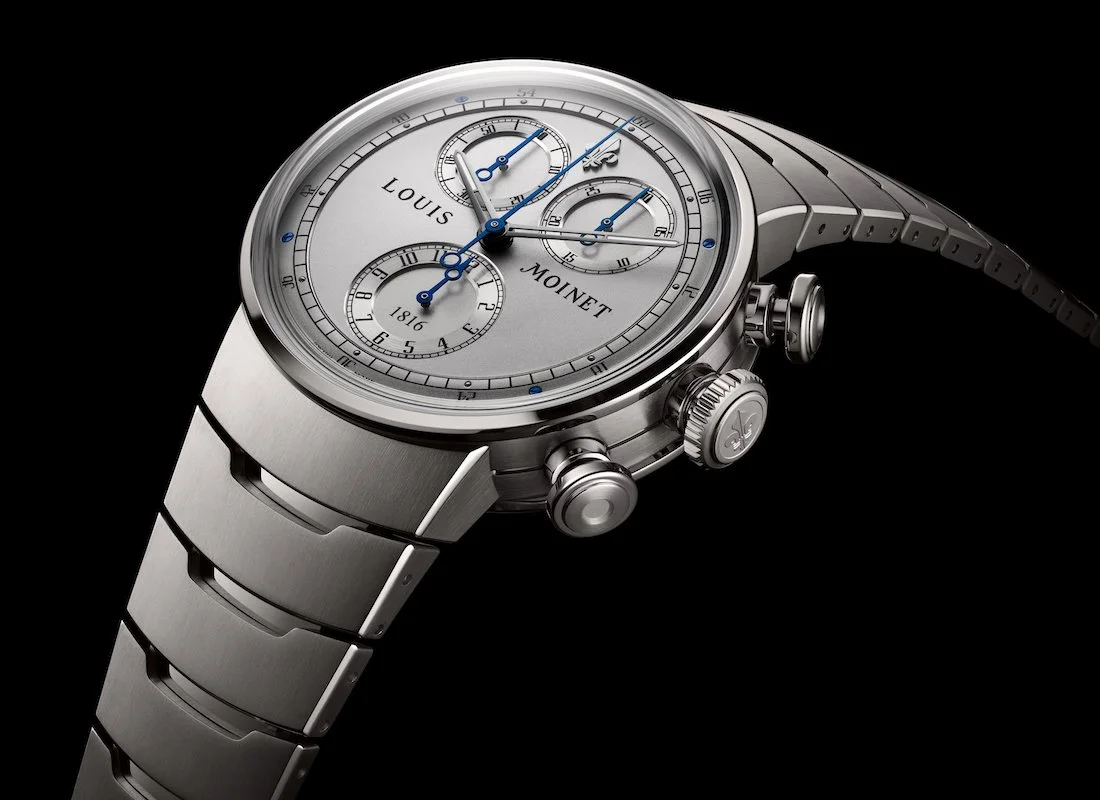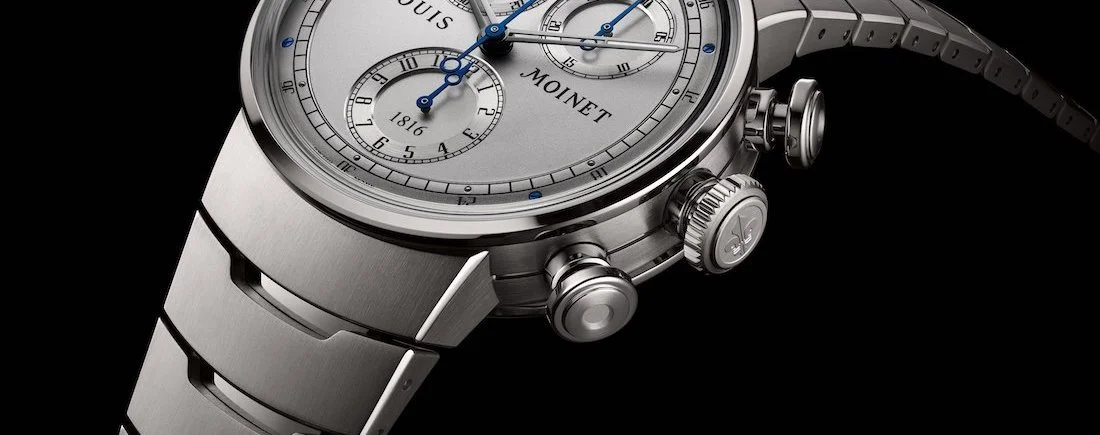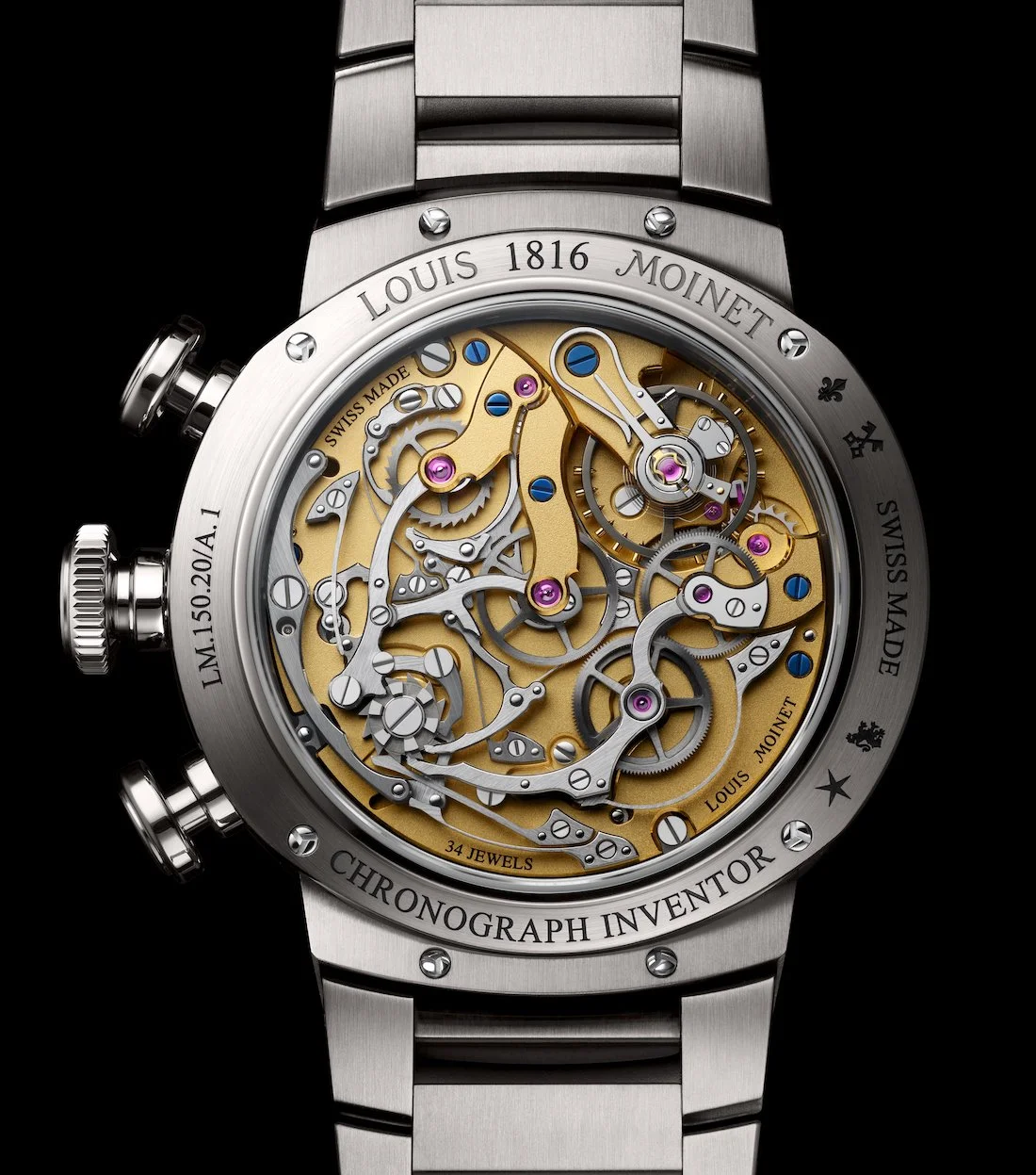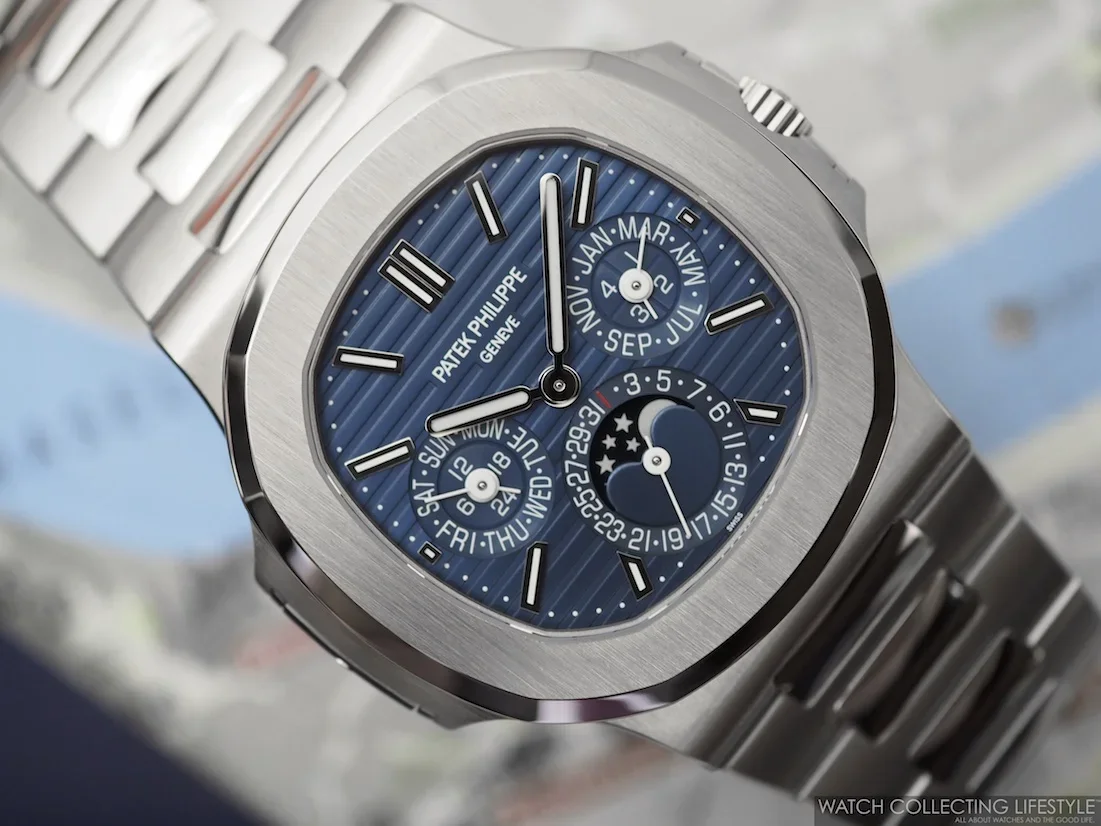In horological history, certain years stand as pivotal moments that altered the trajectory of timekeeping. The year 1816 is when Louis Moinet completed the world's first chronograph, a revolutionary instrument that would establish the foundation for precision timing as we know it today. Over two centuries later, Les Ateliers Louis Moinet presents the 1816 Chronograph, a masterpiece that honors this pivotal legacy while boldly stepping into the future.
Louis Moinet's groundbreaking ‘thirds counter’—compteur de tierces—was born from astronomical necessity, designed to calculate the precise speed at which stars moved across the heavens. This wasn't merely watchmaking; it was the marriage of horology and celestial science, creating an instrument that would define an entirely new category of timepiece.
His chronograph incorporated mechanical solutions that wouldn't be replicated until a century later, demonstrating a level of forward-thinking that places him among the true visionaries of horological history. Today, this historic timepiece rests carefully preserved in the Louis Moinet Museum in Saint-Blaise, a testament to its enduring significance.
Contemporary Interpretation of Timeless Design
The challenge facing Les Ateliers Louis Moinet was profound: how do you honor a 200-year-old masterpiece while creating something entirely relevant for today's most discerning collectors? The answer emerges in the new 1816 chronograph—a timepiece that captures the DNA of the original while embracing contemporary haute horlogerie excellence.
The modern interpretation maintains the sober, functional aesthetic that made the original genuinely avant-garde in its time. This isn't nostalgic reproduction—it's intelligent evolution. The aesthetic codes of the original model receive a completely new interpretation while remaining faithful to traditional haute horlogerie principles.
Engineering Excellence in Grade 5 Titanium
At first glance, the 1816 Chronograph’s case commands attention through its refined sophistication. The double-gadroon case, crafted in polished and satin-finished grade 5 titanium, measures 40.6 mm in diameter and comprises 51 meticulously engineered parts. The original Directoire style semi-bassine design, with its smooth case middle, provides a perfect foundation for the chronograph's purposeful functionality. We can see a slight resemblance to the Louis Vuitton Tambour watch here.
Two understated pushers frame the winding crown, which bears the fleur-de-lys emblem of Bourges—Louis Moinet's birthplace—creating a subtle yet meaningful connection to the master's origins. The result is an elegant, timeless piece engineered for exceptional wrist comfort.
The slightly vaulted dial achieves that elusive balance between legibility and sophistication. The chronograph hand shares space with two totalizers—one for hours, another for minutes—alongside a small seconds subdial. The entire composition is surrounded by a minute and seconds chapter divided into increments of six, directly recalling the original sixtieths of a second indication that made Moinet's creation so revolutionary.
The ‘Project BRIDGE’ Innovation
Perhaps most striking is the grade 5 titanium bracelet—the very first metallic bracelet developed by Les Ateliers Louis Moinet. Dubbed ‘Project BRIDGE’ by the technical department for the elegant, curvilinear shape of its wide links, this truly contemporary bracelet exhibits a singular, unclassifiable design philosophy.
Conceived as a natural extension of the case, the bracelet's progression of links articulates in natural continuity, hugging the wrist while maintaining perfect balance. The interplay of satin and polished finishing creates a sculptural whole that is both fluid and ergonomic—a design achievement that would make even the most demanding collector take notice.
The Heart of Innovation: Calibre LM1816
The true marvel lies within. The challenge of preserving the quintessence of the original chronograph while integrating a movement meeting all haute horlogerie standards required designing a fully integrated calibre from scratch, developed in collaboration with Concepto.
The LM1816 calibre reflects Louis Moinet's avant-garde vision through its distinct architecture, embodying the principles that have driven watchmaking for centuries: functionality, mechanical elegance, aesthetics, and legibility. This manual wound marvel comprises 330 components—including 34 jewels— and the movement beats at a frequency of 28,800 vph to provide a power reserve of 48 hours.
The sapphire display case back reveals the grand interplay of shaped parts, overlapping planes and bridges, concatenated cogs, and chronometric controls. The visual contrasts are striking: the pristine white of steel, the satin finish and brassy hue of bridges, the blue of fixing screws, and the deep red of rubies create a mechanical symphony that speaks to both heart and mind.
A Living Legacy
The Louis Moinet 1816 Chronograph serves as more than a commemorative piece—it's a functional instrument embodying the same spirit of innovation that drove its ancestor. The contemporary dial remains faithful to this functional architecture, using the same layout designed by Louis Moinet himself. The subsidiary dials for small seconds and the 30-minute instantaneous totalizer are arranged horizontally on the top half, overlooking the 12-hour totalizer. Each counter features a satin-brushed annular dial with Arabic numerals, creating a composition of remarkable visual harmony.
Engraving precisely inscribes the dial markings, the name "1816," and "Louis Moinet" in typography faithful to the original creation. The central chronograph hand and counter hands are crafted from blued steel, while hours and minutes are indicated by Louis Moinet-style openworked hands with luminescent-coated tips, ensuring excellent readability against the rhodium dial backdrop.
The entire dial comprises twenty-three elements, including ten blackened nickel cabochons. The center of totalizers, the flange, is divided into six-minute increments, and the dial plate receives bead-blasted finishing. True to the original, the flange mounts with four blued-steel screws, while the fleur-de-lys logo at twelve o'clock pays homage to Bourges, where Louis Moinet was born in 1768.
Sticker Price USD 38,500. For more info on Louis Moinet click here.























